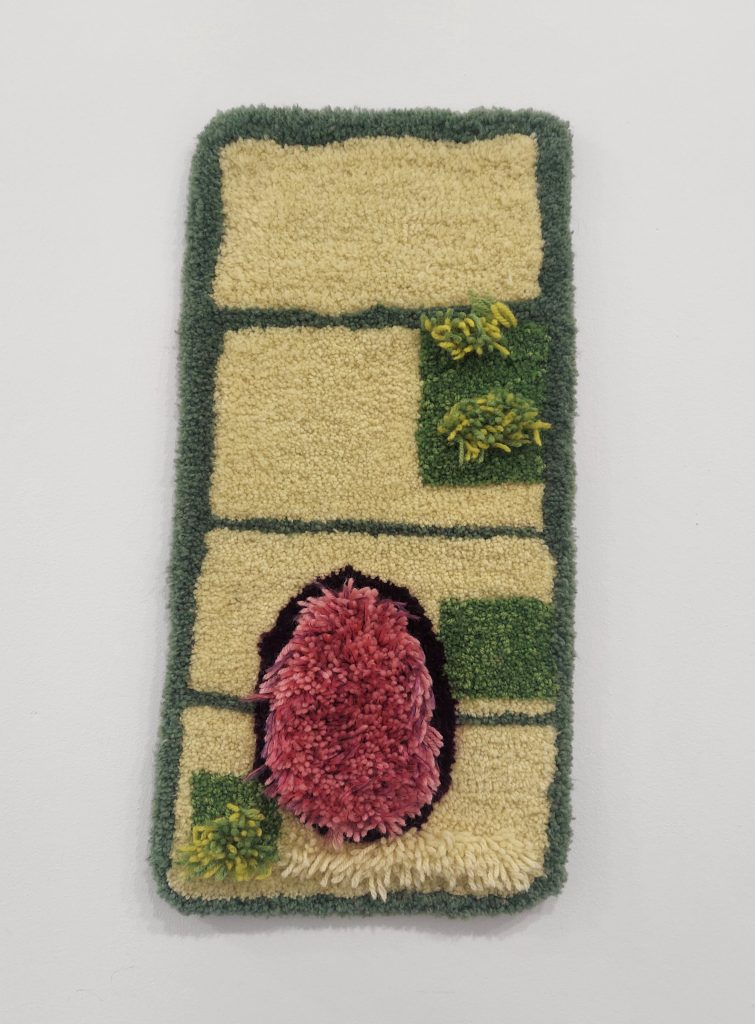
A Brazilian Artist’s Cosmic Wool Paintings

# The Art of Madalena Santos Reinbolt: A Celebration of Identity and Heritage
Madalena Santos Reinbolt was an extraordinary artist whose unique textile works and paintings reflect her deep cultural roots and experiences as a Black woman in Brazil. Her woven embroideries, known as *quadros de lã* (“wool paintings”), bridge the gap between craft and fine art, showcasing a talent that remained underrecognized during her lifetime. Now, her first solo exhibition outside Brazil, *A Head Full of Planets*, at the American Folk Art Museum in New York, seeks to bring her work the attention it deserves.
## **The Origins of a Visionary Artist**
Born in 1919 in Bahia, Brazil, Santos Reinbolt grew up in a rural environment where her family’s livelihood depended on agriculture and domestic crafts. Her mother’s expertise in sewing, lace-making, and ceramics exposed her to a world of tactile artistry from an early age. These early influences later shaped her approach to embroidery and textile arts.
At the age of 20, she left her home to work as a domestic servant. This decision set her on a path where art became both a refuge and an assertion of self-expression. While working for architect Lota de Macedo Soares and poet Elizabeth Bishop in the 1950s, she began painting in her spare time. Ultimately, this devotion to creativity led to her being dismissed from employment, a testament to both her passion and the rigid social constraints placed upon working-class Black women in Brazil.
## **Embroidery as a Language of Expression**
It wasn’t until 1969, a decade before her death, that Santos Reinbolt began to create her iconic wool paintings. Encouraged by her employers, who admired her embroidery on household textiles, she began using yarn as if it were paint. She worked with 154 threaded needles simultaneously, switching colors instinctively to create intricate, dynamic compositions.
Her artistic process was unconventional and deeply intuitive. Her embroidery was more than decorative—it was a rich narrative fabric, chronicling her memories, dreams, and experiences. Her scenes captured the vibrancy of Black communities in Brazil, depicting everyday life, processions, and natural landscapes through gestural stitching on coarse burlap.
## **Themes in Santos Reinbolt’s Work**
Several recurring themes define her work:
– **Nature and Movement** – Her compositions pulse with energy, reminiscent of Vincent van Gogh’s dynamic brushstrokes. The way she arranges her colorful threads brings her landscapes, animals, and human figures to life with a palpable sense of motion.
– **Memory and Identity** – Many of her embroidered pieces are nostalgic recollections of her childhood home in Bahia. They serve as a means of preserving her cultural and personal history while navigating life in predominantly White, upper-class environments.
– **Religious and Cultural Symbolism** – A devout Catholic, she often depicted Christian themes, such as the Last Supper. However, subtle traces of *Candomblé*—an Afro-Brazilian spiritual tradition—also appear, reflecting the blended spiritual practices of Brazil’s Black population.
Through these themes, Santos Reinbolt’s work challenges rigid distinctions between folk art and fine art, showcasing the validity and power of personal narratives crafted through unconventional mediums.
## **Posthumous Recognition and Impact**
During her lifetime, Madalena Santos Reinbolt never received widespread recognition, a common story for many women artists, especially those of African descent in Brazil. Her illiteracy, working-class background, and role as a domestic laborer further marginalized her from the mainstream art world.
However, her rise to recognition in the contemporary art scene is both triumphant and significant. *A Head Full of Planets* celebrates her artistic contributions by presenting over 40 of her textile artworks and earlier oil paintings, allowing new audiences to appreciate her innovation and storytelling.
## **Conclusion**
Madalena Santos Reinbolt’s wool paintings offer a profound glimpse into the life and imagination of a woman who refused to let her circumstances define her artistic voice. By blending embroidery with the spontaneity of painting, she carved a space for herself in art history, one that speaks to resilience, heritage, and the power of self-expression.
Her delayed recognition reminds us that many brilliant artists remain undiscovered due to social inequalities. However, exhibitions like *A Head Full of Planets* help restore their legacies, proving that the art world is ever-expanding—and that stories like Santos Reinbolt’s must be woven into its collective narrative.
*[Madalena Santos Reinbolt: A Head Full of Planets](https://folkartmuseum.org/exhibitions/madalena-santos-reinbolt-a-head-full-of-planets/) runs at the American Folk Art Museum in New York through May 25.*